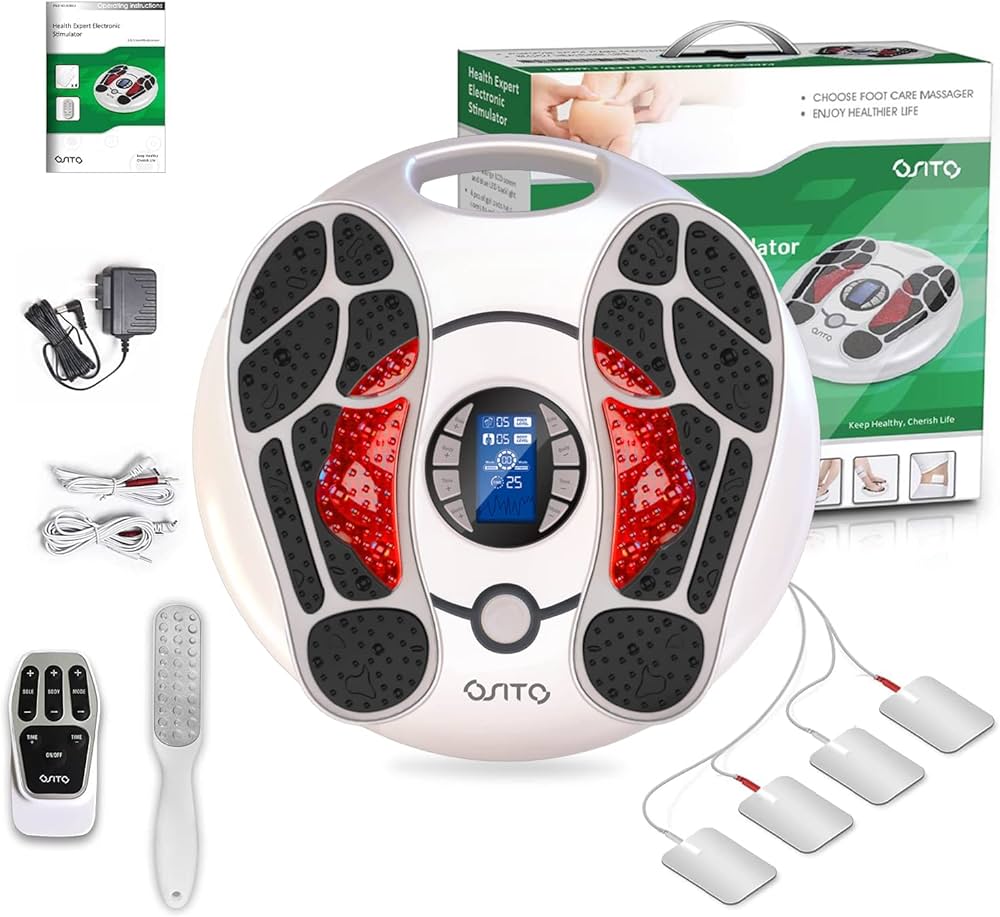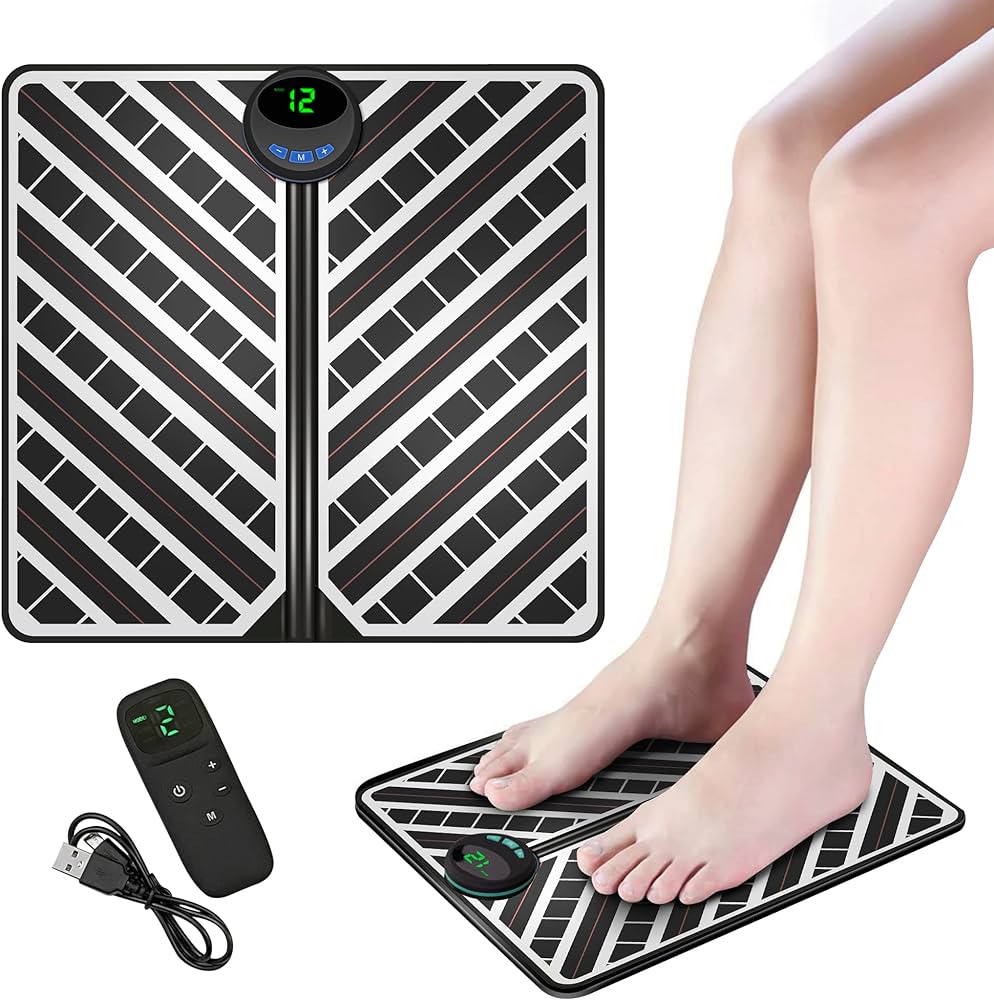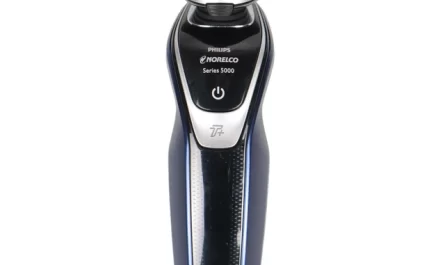Introduction
EMS (Electrical Muscle Stimulation) foot massagers have gained popularity as a convenient and effective way to alleviate foot pain and promote relaxation. However, to ensure safety and maximize the benefits of EMS foot massagers, it is important to understand the appropriate frequency of use. In this guide, we will explore the considerations and guidelines for how often you should use an EMS foot massager. By understanding these factors, you can determine the optimal frequency of use and achieve the best results for your foot health and overall well-being.

How often should you use EMS Foot Massager?
I. Understanding EMS Foot Massagers
-
How EMS Foot Massagers Work:
- EMS foot massagers use low-frequency electrical impulses to stimulate the muscles in your feet. These electrical impulses cause the muscles to contract and relax, mimicking the effects of a traditional foot massage.
-
Benefits of EMS Foot Massagers:
- EMS foot massagers offer several potential benefits, including relief from foot pain, improved circulation, muscle relaxation, reduced muscle fatigue, and enhanced overall foot health. They can also help alleviate symptoms of conditions such as plantar fasciitis, diabetic neuropathy, and swollen feet.
II. Frequency Guidelines for EMS Foot Massager Use
-
Manufacturer’s Recommendations:
- Manufacturers typically provide guidelines for how often their EMS foot massagers should be used. It is important to follow these recommendations, as they are specific to the design and functionality of the device you are using.
-
General Guidelines:
- As a general rule, using an EMS foot massager for 15-30 minutes per session, 2-3 times per week, is a common guideline for most individuals. However, the optimal frequency may vary depending on factors such as your individual needs, foot health, and the intensity of the EMS setting.

III. Personal Factors to Consider
-
Foot Health and Sensitivity:
- If you have any preexisting foot conditions, such as open wounds, fractures, or severe neuropathy, it is essential to consult with a healthcare professional before using an EMS foot massager. They can offer guidance specific to your condition and help determine the appropriate frequency and intensity of use.
-
Personal Sensations and Comfort:
- Pay attention to how your feet feel during and after using the EMS foot massager. If you experience any discomfort, pain, or excessive muscle soreness, reduce the frequency or intensity of use.
IV. Adjusting Frequency Based on Individual Needs
-
Chronic Foot Pain or Discomfort:
- If you have chronic foot pain or discomfort, it may be beneficial to use an EMS foot massager more frequently, such as 3-5 times per week. However, if you experience any unusual pain or worsening symptoms, consult with a healthcare professional.
-
Maintenance and Preventive Care:
- Even if you do not have specific foot issues, incorporating regular EMS foot massager sessions into your routine can provide preventive benefits and promote foot health. Following a 2-3 times per week frequency can help maintain muscle tone, improve circulation, and prevent foot pain and discomfort.
V. Listening to Your Body and Adjusting Accordingly
-
Individual Responses:
- Each individual’s body responds differently to EMS foot massagers. Monitor how your feet feel during and after each session. If you notice any adverse effects, such as increased pain, numbness, or tingling, reduce the frequency or intensity of use and seek medical advice if necessary.
-
Gradual Increase or Decrease:
- If you are new to using an EMS foot massager, start with shorter sessions and gradually increase the duration or frequency as your feet acclimate to the stimulation. Conversely, if you experience discomfort or excessive muscle soreness, reduce the duration or frequency until your feet adjust.

VI. Complementary Foot Care Practices
-
Stretching Exercises:
- Incorporating regular foot stretches and exercises can enhance the benefits derived from EMS foot massagers. Consult with a healthcare professional or physical therapist for appropriate stretching techniques to target specific foot muscles and promote flexibility.
-
Proper Footwear:
- Wearing supportive and comfortable shoes that are appropriate for your activities can contribute to foot health and reduce the need for excessive foot massager use. Ensure that your footwear provides adequate arch support, cushioning, and proper fit.
-
Hydration and Nutrition:
- Proper hydration and a balanced diet are vital for overall foot health. Staying hydrated helps maintain optimal circulation, and a well-rounded diet supports the health of muscles, tendons, and ligaments in the feet.
VII. Professional Guidance and Considerations
-
Consult a Healthcare Professional:
- If you have preexisting foot conditions, underlying health issues, or concerns about using an EMS foot massager, it is advisable to consult a healthcare professional. They can provide personalized advice based on your specific circumstances and foot health.
-
Professional Advice for Optimal Usage:
- A healthcare professional, such as a podiatrist or physical therapist, can offer valuable guidance on how often to use an EMS foot massager based on your foot health, symptoms, and treatment goals. They can also provide recommendations for specific EMS settings and exercises to complement your foot care routine.

IX. Safety Precautions and Considerations
-
Temperature and Intensity Control:
- Some EMS foot massagers come with adjustable temperature and intensity settings. Ensure that you follow the manufacturer’s instructions and use the device within the recommended temperature and intensity range. Using excessively high temperatures or intensities can lead to burns or discomfort.
-
Sensitivity and Skin Reactions:
- Pay attention to any allergic reactions or skin sensitivity that may arise from using an EMS foot massager. If you notice redness, irritation, or rashes, discontinue use and seek medical advice. It may be necessary to switch to a different brand or consult with a healthcare professional for alternative treatment options.
-
Pregnancy or Medical Conditions:
- If you are pregnant or have any underlying medical conditions, consult with a healthcare professional before using an EMS foot massager. Some conditions may require specific precautions or contraindications to ensure your safety and well-being.
-
Electrical Safety:
- Ensure that the EMS foot massager is connected to a safe power source and used according to the provided instructions. Avoid using the device near water or exposing it to excessive moisture, as this can lead to electrical hazards.

VIII. Conclusion
Using EMS foot massagers can be an effective way to address foot pain, improve circulation, and promote relaxation. The appropriate frequency of use will depend on various factors, including foot health, personal sensitivity, and individual needs. Starting with a general guideline of 2-3 times per week for 15-30 minute sessions is a good starting point, but it’s important to listen to your body’s responses and adjust accordingly. Consulting a healthcare professional for personalized guidance, especially if you have preexisting foot conditions, is advisable. Incorporating other foot care practices, such as stretching exercises and proper footwear, can further enhance the benefits derived from EMS foot massagers. By considering these factors and individualizing your usage, you can optimize the benefits of EMS foot massagers and promote long-lasting foot health.



